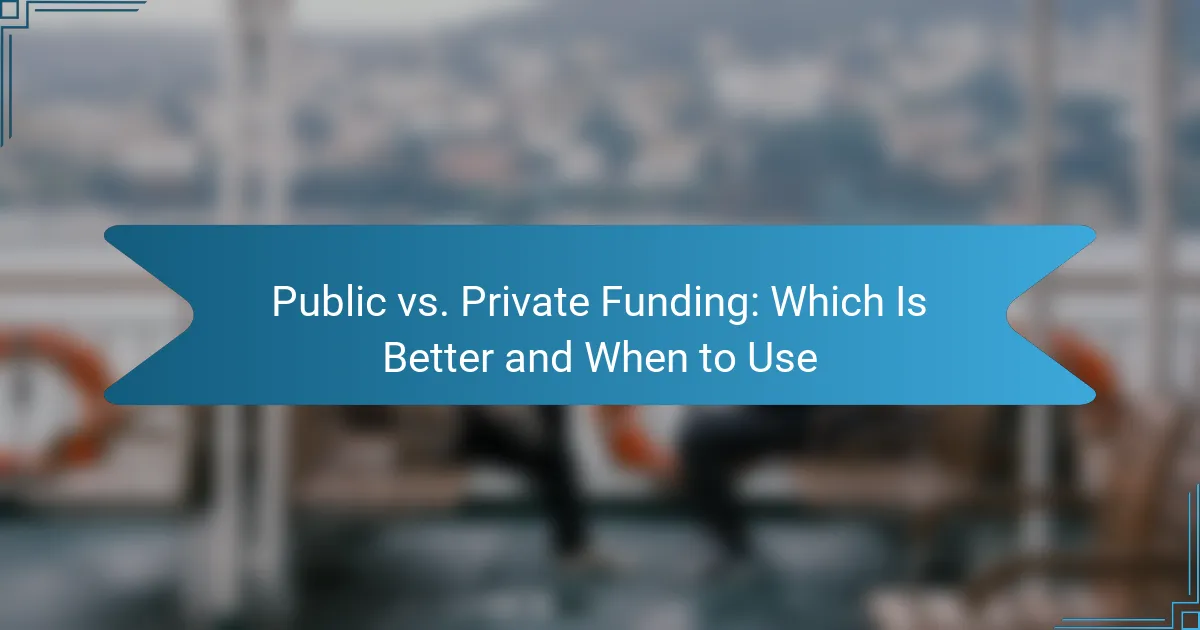Securing funding for human rights projects requires a strategic approach that combines various sources such as grants, crowdfunding, and corporate sponsorships. By understanding the unique advantages and challenges of each funding method, organizations can tailor their strategies to meet specific project needs. Identifying potential donors and crafting compelling proposals are essential steps in aligning project goals with funders’ interests and priorities.
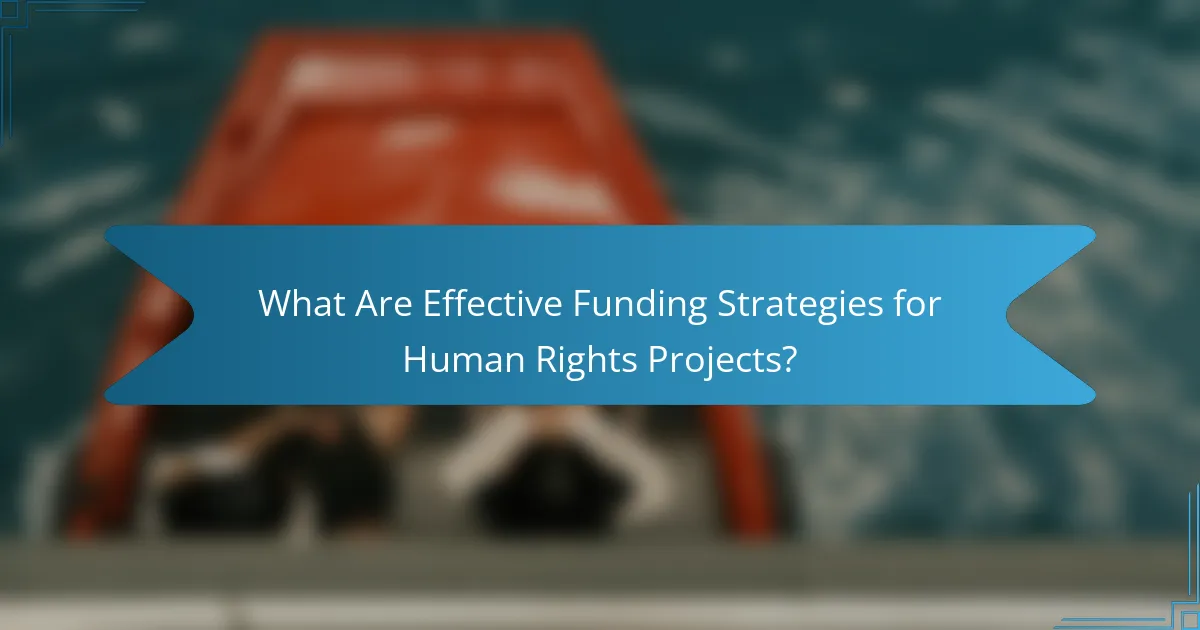
What Are Effective Funding Strategies for Human Rights Projects?
Effective funding strategies for human rights projects include a mix of grants, crowdfunding, corporate sponsorships, government funding, and philanthropic contributions. Each method has unique advantages and challenges, making it essential to choose the right combination based on project needs and target audiences.
Grants from Nonprofit Organizations
Grants from nonprofit organizations are a vital source of funding for human rights initiatives. These grants often focus on specific issues, such as gender equality, refugee support, or environmental justice, and can range from a few thousand to several million dollars.
To secure these grants, organizations should thoroughly research potential funders, tailor proposals to align with their missions, and demonstrate a clear impact. Common pitfalls include submitting generic applications and failing to meet deadlines.
Crowdfunding Campaigns
Crowdfunding campaigns allow individuals and organizations to raise small amounts of money from a large number of people, typically via online platforms. This method can be particularly effective for grassroots projects or urgent causes, with campaigns often raising anywhere from hundreds to tens of thousands of dollars.
Successful crowdfunding requires a compelling story, engaging visuals, and a strong social media presence. It’s crucial to set realistic funding goals and offer attractive rewards to backers, while also being aware of platform fees that can reduce total funds raised.
Corporate Sponsorships
Corporate sponsorships can provide significant financial support for human rights projects, often in exchange for brand visibility and positive public relations. Companies may contribute funds, resources, or services, with sponsorship amounts varying widely based on the corporation’s size and the project’s scope.
To attract corporate sponsors, organizations should identify companies with aligned values and demonstrate how their support can enhance the sponsor’s reputation. Avoiding overly commercial approaches and maintaining the integrity of the human rights message is essential.
Government Funding Programs
Government funding programs can offer substantial support for human rights projects, often through grants or contracts. These funds may come from local, state, or federal levels and can cover a range of activities, including advocacy, education, and direct services.
Applying for government funding typically involves a rigorous application process, including detailed proposals and compliance with specific regulations. Organizations should stay informed about funding opportunities and deadlines, as well as any reporting requirements that come with the funds.
Philanthropic Contributions
Philanthropic contributions from individuals or foundations can be a flexible funding source for human rights projects. These donations can vary greatly, from small individual gifts to large foundation grants, often aimed at innovative or high-impact initiatives.
To attract philanthropic support, organizations should build relationships with potential donors, clearly communicate their mission, and demonstrate the effectiveness of their work. Regular updates and transparency about fund usage can help maintain donor trust and encourage ongoing support.

How to Identify Potential Donors in the UK?
Identifying potential donors in the UK involves researching various funding sources, including grant-making foundations and individual philanthropists. Understanding their interests and funding criteria is crucial for aligning your human rights project with their priorities.
Researching Grant-Making Foundations
Start by compiling a list of grant-making foundations that focus on human rights issues. Resources like the UK Funders Database or the Directory of Social Change can help you identify foundations that have a history of funding similar projects.
When researching, pay attention to each foundation’s funding guidelines, application processes, and deadlines. Many foundations prefer projects that demonstrate clear impact and sustainability, so tailor your proposals accordingly.
Networking with Philanthropists
Building relationships with philanthropists can significantly enhance your chances of securing funding. Attend events, workshops, and conferences focused on human rights to meet potential donors and engage in meaningful conversations about your work.
Utilize platforms like LinkedIn to connect with philanthropists who have shown interest in human rights initiatives. Personalize your outreach by referencing their previous contributions or interests, and be prepared to discuss how your project aligns with their philanthropic goals.
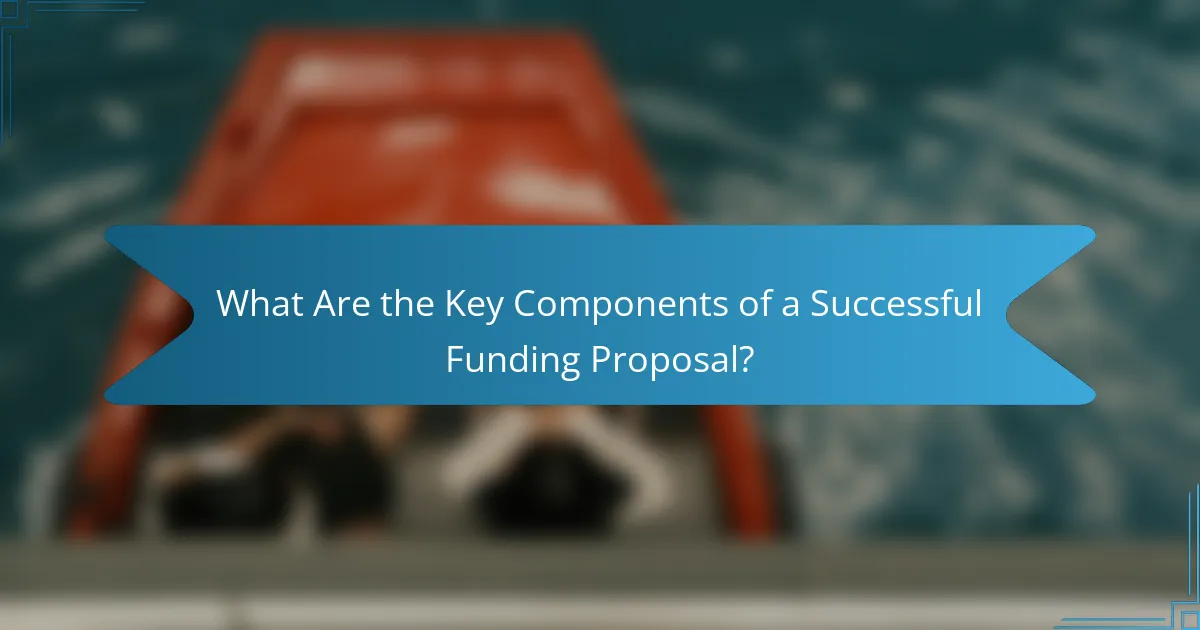
What Are the Key Components of a Successful Funding Proposal?
A successful funding proposal includes several essential components that clearly communicate the project’s goals, budget, and expected impact. These elements work together to persuade potential funders of the project’s value and feasibility.
Clear Project Objectives
Defining clear project objectives is crucial for any funding proposal. Objectives should be specific, measurable, achievable, relevant, and time-bound (SMART). For example, instead of stating a goal to “improve human rights,” specify “increase awareness of human rights issues among 500 community members within six months.”
Clearly articulated objectives help funders understand the project’s direction and expected outcomes, making it easier for them to assess its alignment with their funding priorities.
Detailed Budget Breakdown
A detailed budget breakdown is essential to demonstrate how funds will be allocated. This should include direct costs, such as personnel, materials, and travel, as well as indirect costs like administrative expenses. Providing a clear financial plan helps funders see the project’s financial viability.
Consider using a table to present the budget, outlining each category and its associated costs. For example, you might list personnel costs as $20,000, materials as $5,000, and travel as $3,000, totaling $28,000. This transparency builds trust with potential funders.
Impact Measurement Metrics
Establishing impact measurement metrics is vital for assessing the project’s success. These metrics should align with the project objectives and provide quantifiable data on outcomes. For instance, if the objective is to raise awareness, metrics could include pre- and post-project surveys measuring knowledge levels.
Utilizing both qualitative and quantitative metrics can provide a comprehensive view of the project’s impact. Funders appreciate clear plans for evaluation, as it shows commitment to accountability and continuous improvement.
Compelling Narrative
A compelling narrative weaves together the project’s objectives, budget, and impact into a cohesive story. This narrative should engage funders emotionally, illustrating the human element behind the project. Use real-life examples or testimonials to highlight the urgency and importance of the cause.
Keep the language clear and persuasive, avoiding jargon that may alienate readers. A strong narrative not only captures attention but also reinforces the project’s significance, making it more likely to resonate with potential supporters.
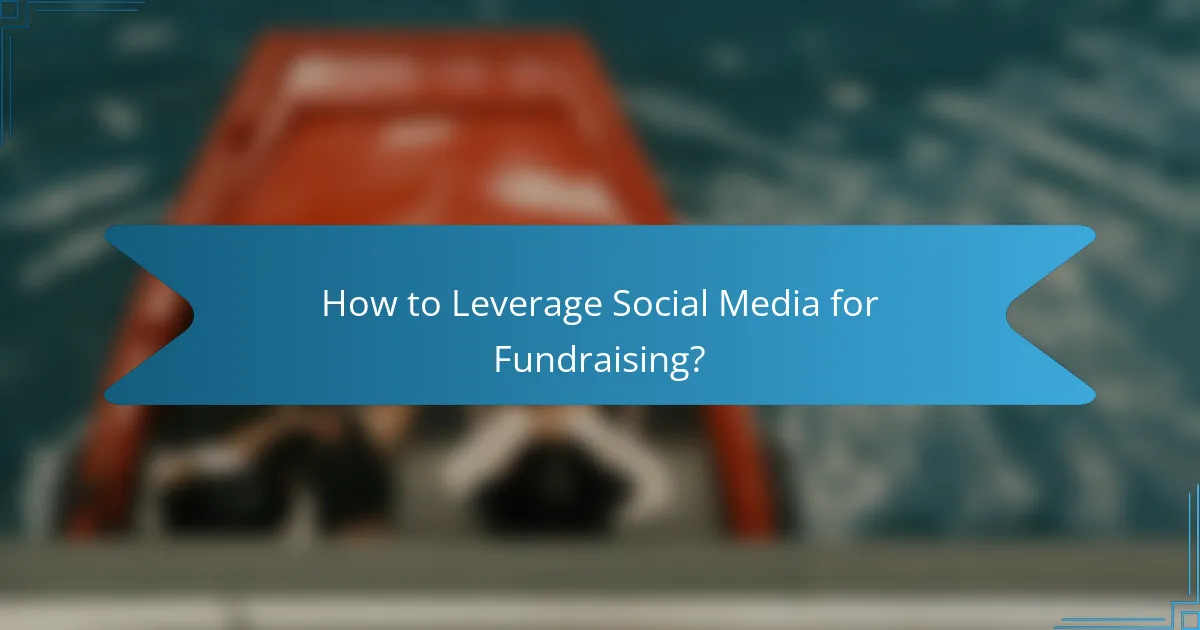
How to Leverage Social Media for Fundraising?
Leveraging social media for fundraising involves utilizing platforms like Facebook, Instagram, and Twitter to connect with potential donors and raise awareness for human rights projects. By creating engaging content and targeted campaigns, organizations can effectively reach a broader audience and encourage contributions.
Engaging Storytelling
Engaging storytelling is crucial for capturing the attention of potential donors on social media. Sharing compelling narratives about the impact of your human rights projects can create an emotional connection, prompting individuals to support your cause. Use visuals, personal testimonials, and success stories to illustrate the difference donations can make.
Consider using formats like short videos or infographics to convey your message succinctly. Aim for stories that highlight real people and tangible outcomes, as these resonate more with audiences. Regularly update your followers on progress to maintain interest and encourage ongoing support.
Targeted Advertising Campaigns
Targeted advertising campaigns on social media allow organizations to reach specific demographics that are more likely to support human rights initiatives. By utilizing the advertising tools available on platforms like Facebook and Instagram, you can set parameters based on interests, location, and behavior to maximize your outreach.
Start by defining your target audience and creating tailored ads that speak directly to their values and interests. Monitor the performance of your campaigns and adjust your strategies based on engagement metrics. Allocate a reasonable budget, starting with a few hundred USD, to test different approaches and find what resonates best with your audience.
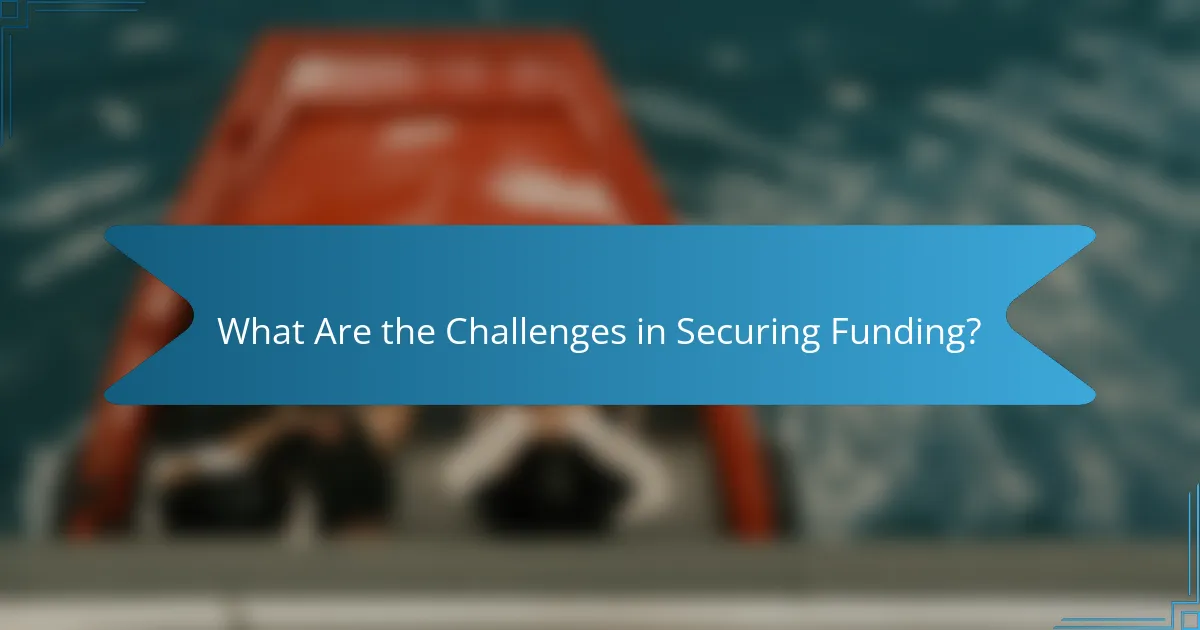
What Are the Challenges in Securing Funding?
Securing funding for human rights projects presents several challenges, including limited resources, stringent eligibility criteria, and fluctuating donor priorities. Organizations must navigate these obstacles to effectively attract and retain financial support.
Increased Competition for Grants
The competition for grants has intensified as more organizations seek funding for human rights initiatives. This surge in applicants can make it difficult for individual projects to stand out, especially when many proposals address similar issues.
To improve chances of success, organizations should focus on crafting unique narratives that highlight their specific impact and community engagement. Tailoring proposals to align with the funder’s mission and demonstrating measurable outcomes can also enhance competitiveness.
Stringent Eligibility Criteria
Many funding sources impose strict eligibility criteria that can limit access for some organizations. These criteria may include specific geographic focus, project size, or the requirement of prior funding experience.
To navigate these restrictions, organizations should thoroughly research potential funders and ensure their projects align with the funder’s goals. Building relationships with funders and seeking feedback on proposals can also help organizations better understand and meet these requirements.
Fluctuating Donor Priorities
Donor priorities can change based on political, economic, or social factors, impacting the availability of funding for human rights projects. This unpredictability can create challenges in long-term planning and project sustainability.
Organizations should stay informed about current trends and shifts in donor interests. Diversifying funding sources and developing adaptable project plans can help mitigate the risks associated with fluctuating donor priorities.


